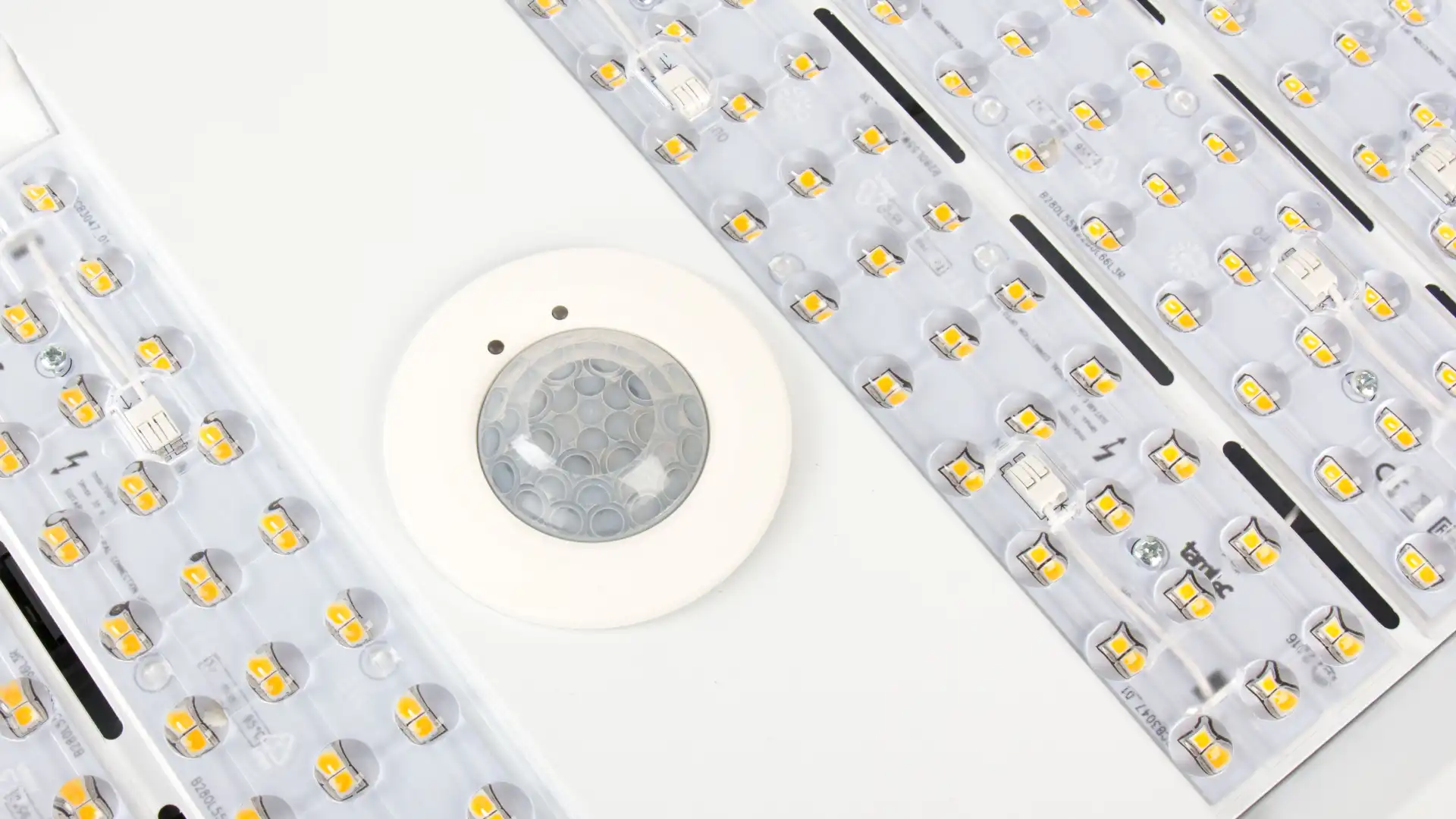A guide to understanding lighting optics

Optics plays a crucial role in any lighting system’s performance. But what does the term ‘lighting optics’ mean? And why is an understanding of optics so crucial to efficient and effective LED lighting design for both exterior and interior settings?
In simple terms, optics in lighting is the science of controlling the distribution of light in lighting systems. Whether a luminaire is part of a torch, a street lamp or a sophisticated stage lighting system, optics govern how its light behaves.
Optics in LED lighting systems
LED’s typically have two levels of optics at play. The primary optic is the small dome that sits over the diode itself. This serves to protect and shape the output of the diode, but the light from a LED’s primary optic is too broad for most applications, lacking intensity over distance. This is why most LED fixtures use secondary optics such as lenses, reflectors, or TIR (total internal reflection) optics, to collect all available light and magnify its intensity towards a target.
Secondary optics in LED lighting is used to control the beam angle of the output light, to create either crisp-edged or diffused light, or to concentrate light in certain areas while limiting it in others. ‘Collimation’ is the process of aligning all components to bring light to its best focus. So, a perfectly collimated light beam, with no divergence, would not disperse with distance.
Designing with optics: Interiors
Interior lighting optics is centred around creating a comfortable, productive environment for occupants, for example, within the workplace. Most interior optics are symmetrical, meaning light sources distribute light evenly in all directions. This type of light beam is recommended for both general lighting of large spaces and accent lighting for visual tasks.
The challenge for lighting designers when specifying luminaires for interior environments is to strike a balance between glare (unwanted bright light) and meeting the lighting needs of individual workers.
One solution is to use suspended luminaires with a built-in uplighter function – delivering illumination up to the ceiling as well as downwards. This helps to lower unwanted glare (otherwise known as reducing the space’s Unified Glare Rating), whilst also providing a brighter, more appealing workplace.
Designing with optics: Exteriors
In contrast to interior lighting optics, asymmetrical lighting is ideal for concentrating the light beam in one direction, so as to not illuminate areas that are not intended to be lit (obtrusive light).
The control and reduction of obtrusive light is hugely important for exterior lighting. The invention of artificial light and its application in the external environment has done much to safeguard and enhance our night-time environment. But, if not properly controlled, obtrusive light becomes light pollution and can present serious physiological and ecological problems:
- Sky glow means the brightening of the night sky and is the spread of mostly upward light from artificial light sources into the night sky that creates an unnatural brightening of the sky. Optics can help reduce the upward (ULOR) distribution from floodlights, wall lights and lanterns.
- Glare is the uncomfortable brightness of a light source when viewed against a darker background. It can cause a wide range of dangers on highways and roads. Accurate control of a high brightness LED source is critical in these areas.
- Spill light and light intrusion (the spilling of light beyond the boundary of the area being lit) can cause unnecessary illumination into adjacent areas. Accurate control of the light via optics can help to reduce the effect.
All the examples above are forms of obtrusive light which can cause nuisance to others, or adversely affect fauna and flora as well as increasing energy usage and therefore energy costs. It follows that when it comes to designing a lighting system for an exterior area, it is important to ensure beam angles are set correctly.
Boosting energy performance through optics
A luminaire with well-directed light will necessarily be more energy efficient than a fitting that illuminates areas needlessly. This is something that needs to be considered when specifying a lighting design, especially if value engineering is a concern.
Ultimately, good lighting design means providing the right light, at the right time, in the right place, controlled by the right system. It is the role of optics to help deliver this result.
- As a leading lighting manufacturer committed to supporting better, healthier and more energy efficient environments, Tamlite offers a range of lighting solutions designed with performance and sustainability in mind. For more information, please visit our website.

.webp)
